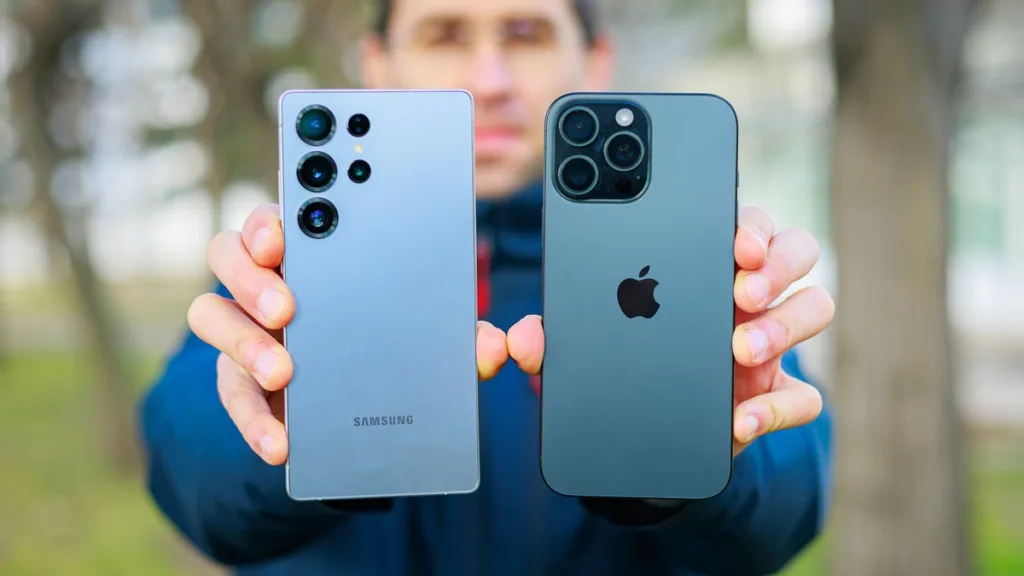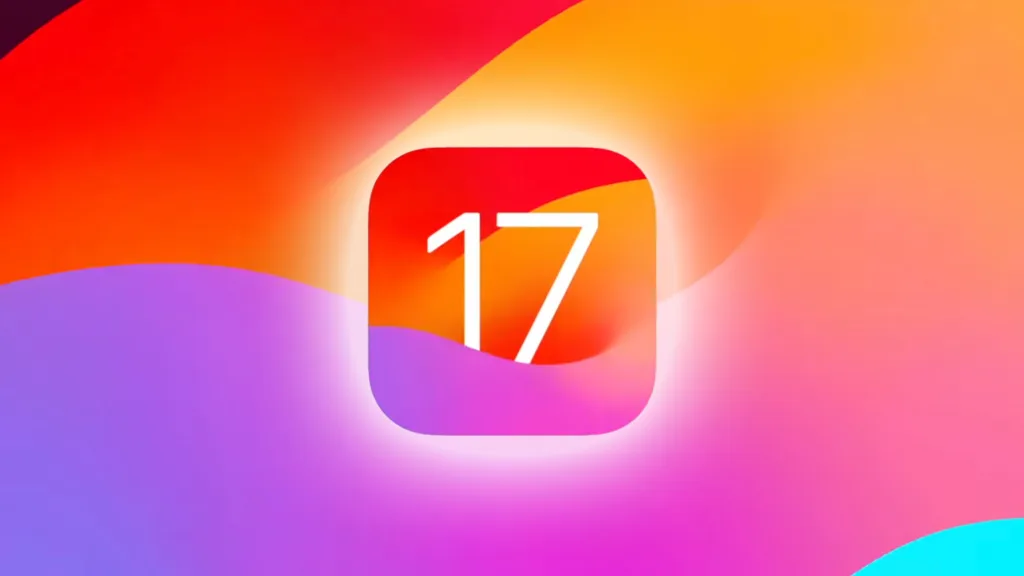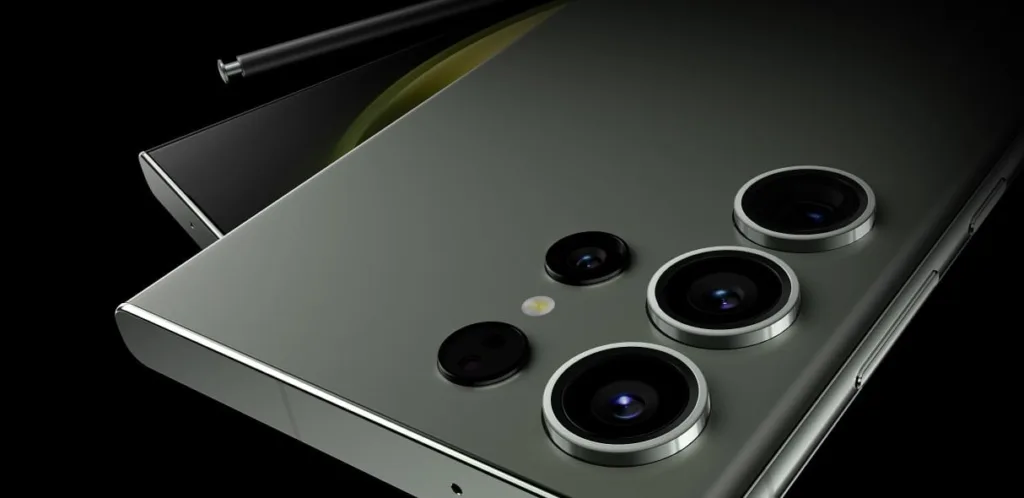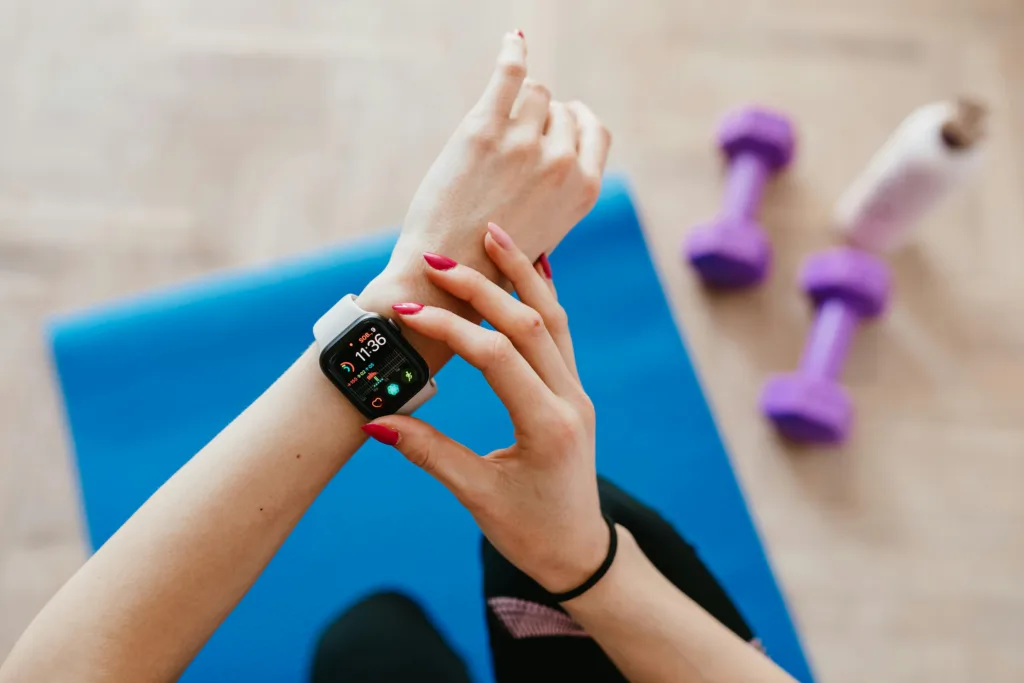
In the endless smartphone war, two titans remain queens of the global stage—Samsung and Apple. Their latest flagships, Samsung Galaxy S25 and iPhone 16, offer a fascinating glimpse into the cutting edge of 2025 mobile tech.
Both phones share significant upgrades, newer designs, and additional integrations with artificial intelligence. The question now becomes: which one is the ultimate supreme?
Here is a side-by-side comparison of iPhone 16 and Galaxy S25 based on design, performance, camera capabilities, battery life, software quality, and so on.
Design & Display
iPhone 16
- Size & Materials: Apple has taken a conservative approach, retaining the squared-edge design but slimming down the bezels further.
- New Action Button: A customizable Action Button (introduced in iPhone 15 Pro) is now standard across the lineup.
- Display: Super Retina XDR OLED, 6.3″ or 6.9″ (Pro Max), with up to 2500 nits peak brightness, perfect for outdoor viewing.
- ProMotion: 120Hz adaptive refresh rate remains, with a bump in power efficiency.
Galaxy S25
- Size & Materials: Samsung has moved to a flatter aesthetic with a matte titanium frame, reducing glare and fingerprints.
- Display: 6.4″ or 6.8″ Dynamic AMOLED 3X with LTPO tech and up to 3000 nits peak brightness.
- AI-Tuned Display: Samsung’s new AI Vision Optimizer adapts color profiles based on ambient light and app use in real time.
Winner: Galaxy S25 – Slightly larger, brighter display with a more immersive viewing experience.
Performance & Speed
iPhone 16
- Chipset: Powered by the A18 Pro, Apple’s first chip manufactured on the 2nm process. It’s built for on-device AI with a 40% faster Neural Engine.
- RAM: 8GB on all models, optimized for iOS 18.
- Thermals: New vapor chamber cooling reduces thermal throttling under load.
Galaxy S25
- Chipset: Snapdragon 8 Gen 4 (for global variants) or Exynos 2500 (in some markets), both manufactured on 3nm nodes.
- RAM: 12GB standard, 16GB on Ultra models.
- AI Co-Processor: Samsung debuts its NPU 2.0, a dedicated chip for LLM-based on-device tasks.
Winner: iPhone 16 – While both chips are powerful, Apple’s custom silicon and 2nm advantage deliver unmatched sustained performance and energy efficiency.
Camera Capabilities
iPhone 16
- Main Sensor: 48MP with improved low-light performance and Photonic Engine enhancements.
- Ultra-Wide & Telephoto: Upgraded lenses, 5x optical zoom (Pro Max).
- AI Photography: iOS 18 uses machine learning to auto-organize galleries and improve portrait depth after the fact.
Galaxy S25
- Main Sensor: 200MP ISOCELL HP3 sensor with pixel binning.
- Zoom: 10x optical zoom, up to 100x digital with AI stabilization.
- AI Assist: Galaxy AI edits photos, removes unwanted objects, and can change facial expressions post-shot.
Winner: Galaxy S25 – The sheer flexibility and AI-powered editing tools give Samsung an edge, especially for power users and content creators.
Battery Life & Charging
iPhone 16
- Battery Capacity: ~3,500mAh (Standard), ~4,400mAh (Pro Max).
- Charging: 35W wired, 15W MagSafe.
- AI Battery Management: iOS now learns user habits to optimize background activity and extend daily use.
Galaxy S25
- Battery Capacity: ~4,800mAh to 5,000mAh depending on model.
- Charging: 45W wired, 15W wireless, and reverse wireless charging for wearables.
- Battery Health AI: Predicts degradation and recommends optimization modes.
Winner: Galaxy S25 – Bigger battery, faster charging, and more versatile options.
AI & Software Integration
iPhone 16 (iOS 18)
- Apple Intelligence: Built-in LLM integration for Siri, Spotlight, and in-app suggestions.
- Privacy Focus: AI features processed mostly on-device with Secure Enclave enhancements.
- Exclusive Features: Smart Summaries, AI-generated reply suggestions, and Photo Cleanup—all seamlessly baked into iOS.
Galaxy S25 (One UI 7 / Android 15)
- Galaxy AI: Includes Google Gemini integration, circle-to-search, and AI tools like transcript generation, real-time translation, and generative wallpapers.
- DeX Mode 2.0: Revamped for AI-enhanced multitasking.
Winner: iPhone 16 – Apple’s privacy-first, deeply embedded AI features offer a smoother, more cohesive experience.
Security & Ecosystem
iPhone 16
- Tight integration across Apple Watch, Mac, iPad, and AirPods.
- Face ID improvements.
- End-to-end encryption for most services, including Photos, Notes, and iCloud Mail.
Galaxy S25
- Samsung Knox Vault, fingerprint scanner under display.
- Expanding the SmartThings ecosystem.
- Samsung Wallet with biometric authentication and digital key support.
Winner: Tie – Both offer robust ecosystems, though Apple edges ahead if you’re deeply embedded in their hardware lineup.
Price & Value
| Model | iPhone 16 Pro Max | Galaxy S25 Ultra |
| Starting Price | $1,199 | $1,199 |
| Storage Options | 256GB to 1TB | 256GB to 1TB |
| Longevity | 5–6 years of support | 4–5 years (OS + security updates) |
Winner: iPhone 16 – Better long-term support and resale value.
Final Verdict: Which One Wins in 2025?
| Category | Winner |
| Display | Galaxy S25 |
| Performance | iPhone 16 |
| Camera | Galaxy S25 |
| Battery & Charging | Galaxy S25 |
| Software & AI | iPhone 16 |
| Ecosystem | Tie |
| Price & Support | iPhone 16 |
Overall Winner: It’s a Tie — Depending on What You Value Most
- If you’re all about hardware versatility, creative photography, and power features, the Galaxy S25 is a no-brainer.
- If you prefer polished performance, tighter ecosystem integration, and privacy-focused AI, the iPhone 16 remains unmatched.
Bottom Line
In 2025, choosing between iPhone 16 and Galaxy S25 isn’t just about specs. It’s about the experience you want—Apple’s walled garden of optimization or Samsung’s playground of features and flexibility.
Either way, you’re getting one of the best smartphones money can buy.
Explore other articles:
Super Apps & Mini Programs: The Rise of All-in-One Platforms
Biohacking and Wearable Tech: Optimizing Your Body with Gadgets






